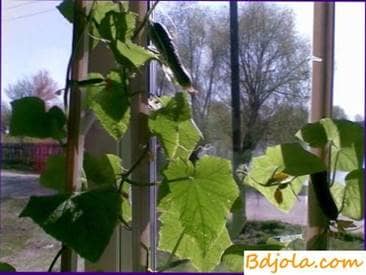Picking an apiary in a greenhouse

If there is a possibility to choose an economy, where it is possible to buy bees, preference should be given to those apiaries that are famous for good honey collectors.
Before buying bees, it is necessary to find out through the district zootechnician-beekeeper and veterinarians whether there are any infectious diseases and parasites of bees in the apiary. Prosperity of bees is confirmed by the corresponding passport of the apiary. The best time for the acquisition of bees is spring, shortly after their exhibition from the winter hut. At this time it is cool, and bees are not so much that, when transported for a long distance, they are afraid of their steaming and breaking the honeycombs, as it happens in the hot season. Each bee family should have a fetal uterus.
It is not necessary to find it among the mass of bees: the presence in the honeycomb of an uneven-aged brood, especially eggs, and the absence of fistula queen cells confirm the presence of the uterus.
The medium-sized bee colonies occupy 6-7 small streets of bees, that is, each frame contains 250-300 g of bees.
The amount of food in the nest should be in the range of 8-10 kg, and within the framework, especially from the edges of the nest, there must be a pergola. If there is less food in the nest, and there is no honey crop in the new place for bees, the feed is replenished to normal. Purchased bees need to be prepared for transportation. If bees are purchased together with beehives, in order for the frame to remain unmoveable, it is sufficient to fasten the frame hangers to the two racks. If, however, the bees are transplanted into another hive, then the beehive-dividers are suspended between the wall of the hive and the frames.

When transporting bees in summer, heavy honey frames are removed from strong families, freshly built, and also with
Bees brought to a new place in the evening or at night, calm down by the morning and, flying out of the hive, do not make an approximate overflight, as a result of which they wander without finding their hive. At the same time, some families are increasing, others are weakening. In order not to allow the bees to fly, the hives should be placed as rarely as possible, and the tapeworms should lay grass or incline branches or plaques to obstruct the flight of the bees. Having met on its way an obstacle, bees fly around, memorizing a new place. Good results will be if in the morning before flying out the bees in the field in the hive give a few jets of smoke.
It is not recommended to purchase bees in winter. At this time, it is not possible to inspect the nest of bees, in order to establish the strength of the family, the presence of the uterus and the sufficiency of fodder reserves. Transportation of bees in winter is very risky, but sometimes you have to do it.
To reduce shocks and to avoid breakage of honeycombs, the machine is loaded with ballast and, as it was said above, straw, bags or other materials are placed under the hives.
The bee colonies brought to the farm are immediately placed in heated greenhouses. This will make it possible for bees who have broken away from the club to join him. If it is not possible to put the bees in a warm room, then once the bees have calmed down, you need to open the nest and see if the club has split in two, if the bees are behind the diaphragm. The separated bees are attached to the main club.
Practice is also the acquisition of bees from southern nurseries in packages. It should be borne in mind that only early packs of bees, received in May or early June, are complete. Only they can develop to the normal strength of the bee family and safely endure the wintering.
Packages with bees received at a later date need to be underpinned by the existing basic bee colonies or by combining 2-3 packets into one.
When buying a large number of packages it is more appropriate, upon agreement with the management of the nursery, to take them on site and transport them to the farm on their own transport.
Usually packages are transported by rail and airplanes. Having received a notification of the arrival of the bees to their destination, they should immediately be brought to the farm, as there may not always be favorable conditions for the conservation of bees, besides, storekeepers of stations may not know these conditions.
The small losses of bees (up to 100 g in the package) during shipment are possible and natural. If a significant part of the bees are at the destination of the deceased, then in the presence of a representative of the station, port or mail, a corresponding act is drawn up. In this case, the bees who died in the packages are compensated by the sending economy.
Packages brought to the farm are put in a cool room or in a shade. The bees from the packages in the beehives are transplanted at will at the end of the day. If this work is carried out in the afternoon, many bees will scatter over other hives. If it is not possible to transplant the bees from all the packages, the remainder of the packages are placed on the supports in front of the empty hives, into which the bees will then be transplanted. At the same time, flasks are opened in packages to fly over bees.
Packed bees will develop better if they are reinforced by brood from strong families, and in the absence of honey collection, in addition, it is necessary to replenish fodder reserves.
Picking an apiary in a greenhouse
